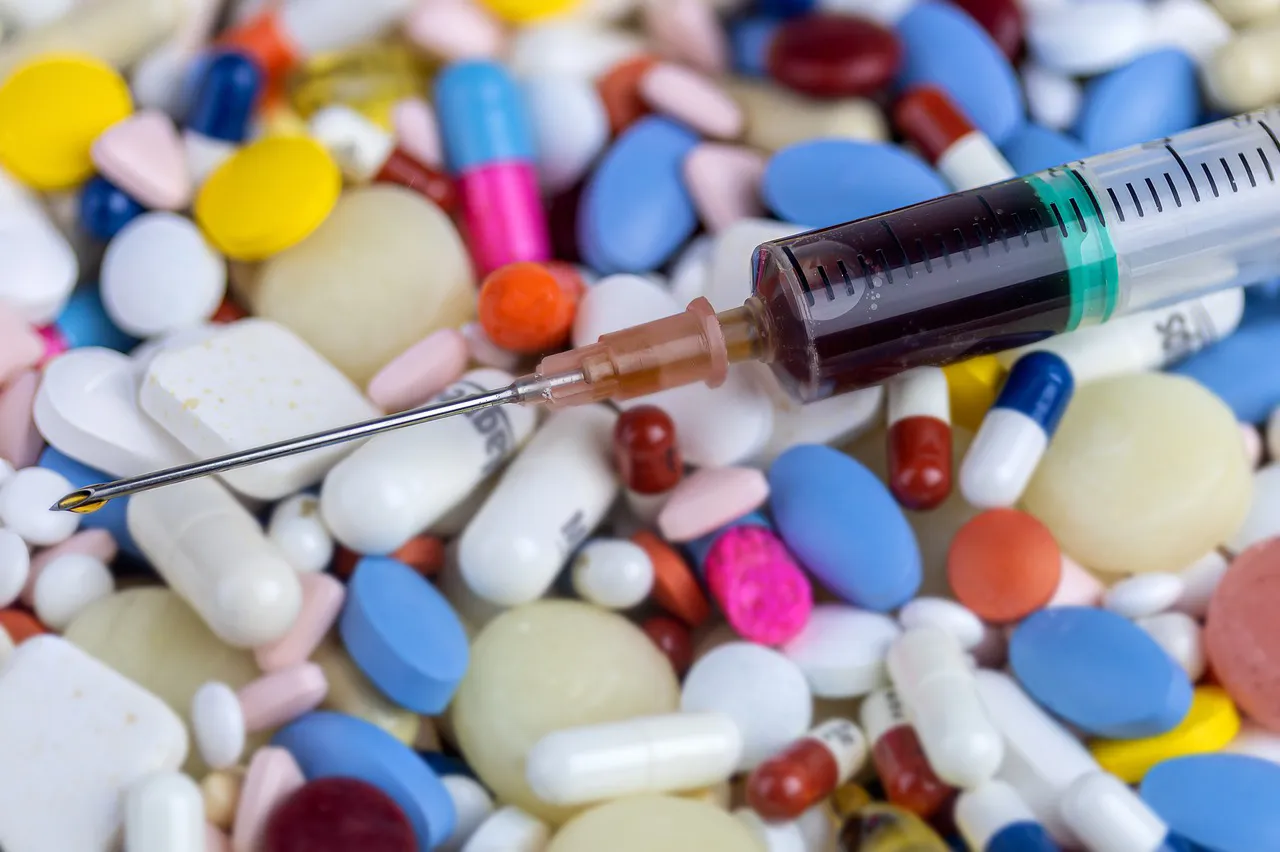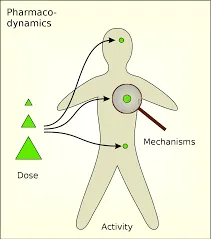Hello social friends. Hope we are doing great. I will like to share with us some of my findings concerning drugs especially dosing.
Alright let's go down to topic of the day.

Source: https://pixabay.com/photos/syringe-needle-drug-medical-4938063/
SIGNALLING
Signalling is concerned with how cells communicate and the intracellular responses generated in response to chemicals including hormones, neurotransmitters and drugs.
This is particularly strong in the area of calcium signalling. Calcium is the most common cellular signalling element regulating a myriad of cellular processes including the key processes in the nervous and cardiovascular systems. Several classes of important drug molecules target calcium signaling pathways.
DRUG ACTION AND PHARMACODYNAMICS

Source; Pharmacodynamics - Wikipedia
en.wikipedia.org
Pharmacodynamics is the study of the biochemical and physiologic effects of drugs and their mechanisms of action on the body or on microorganisms and other parasites within the body. It considers both drug action, which refers to the initial consequence of a drug-receptor interaction, and drug effect, which refers to the subsequent effects. The drug action of digoxin, for example, is inhibition of membrane Na+/K+-ATPase; the drug effect is augmentation of cardiac contractility. In this example, the clinical response might comprise improved exercise tolerance.
Not all drugs exert their pharmacologic actions via receptor-mediated mechanisms. The action of some drugs—including inhalation anaesthetic agents, osmotic diuretics, purgatives, antiseptics, antacids, chelating agents, and urinary acidifying and alkalinizing agents—is attributed to their chemical action or physicochemical properties. Certain cancer and antiviral chemotherapeutic agents, which are analogues of pyrimidine and purine bases, elicit their effects when they are incorporated into nucleic acids and serve as substrates for DNA or RNA synthesis. The effect of most drugs, however, results from their interactions with receptors. These interactions and the resulting conformational changes in the receptor initiate biochemical and physiologic changes that characterize the drug’s response.
SIGNAL TRANSDUCTION AND DRUG ACTION
Most receptors are proteins. The best characterized of these are regulatory proteins, enzymes, transport proteins, and structural proteins. Nucleic acids are also important drug receptors, particularly for cancer chemotherapeutic agents.
The receptors for several neurotransmitters modulate the opening and closing of ion channels through ligand gating or voltage gating. The nicotinic acetylcholine receptor is an example of a ligand-gated receptor; it allows Na+ to flow down its concentration gradient into cells, resulting in depolarization. Most clinically useful neuromuscular blocking drugs compete with acetylcholine for the receptor but do not initiate ion-channel opening. Other ligand-gated ion channels include the CNS receptors for the excitatory amino acids (glutamate and aspartate), the inhibitory amino acids (γ-aminobutyric acid [GABA] and glycine), and certain serotonin (5-HT3) receptors. The sodium channel receptor is an example of a voltage-gated receptor; these are present in the membranes of excitable nerve, cardiac, and skeletal muscle cells. In the resting state, the Na+/K+-ATPase pump in these cells maintains an intracellular Na+ concentration much lower than that in the extracellular environment. Membrane depolarization causes channel opening and a transient influx of Na+ ions, followed by inactivation and return to the resting state. The action of local anesthetics is due to their direct interaction with voltage-gated Na+ channels.
Intracellular receptors are also important in mediating the action of antimicrobial drugs, including the penicillins, sulfonamides, trimethoprim, aminoglycosides, phenicols, macrolides, and fluoroquinolones. The mechanisms of action include inhibition of bacterial protein synthesis, inhibition of cell wall synthesis, inhibition of enzymatic activity, alteration of cell membrane permeability, and blockade of specific biochemical pathways.
DRUG DOSE AND CLINICAL RESPONSE
To make rational therapeutic decisions, it is necessary to understand the fundamental concepts linking drug doses to concentrations to clinical responses. The concentration response relationships for drugs may be graded or quantal. A graded concentration response curve can be constructed for responses measured on a continuous scale, eg, heart rate. Graded concentration-response curves relate the intensity of response to the size of the dose and, hence, are useful to characterize the actions of drugs. A quantal concentration response curve can be constructed for drugs that elicit an all-or-none response, eg, presence or absence of convulsions. For most drugs, the doses required to produce a specified quantal effect in a population are log normally distributed, so that the frequency distribution of responses plotted against log dose is a gaussian normal distribution curve. The percentage of the population requiring a particular dose to exhibit the effect can be determined from this curve. When these data are plotted as a cumulative frequency distribution, a sigmoidal dose response curve is generated.
CONCLUSION
This is necessary especially in the clinical areas for medics to know the amount of drug to be prescribed for a patient. Having understood this, you can now see the reason behind the quantity of drugs given to by doctors.
Thank you for your time 🙌.
REFERENCES
Pharmacodynamics - Wikipedia
en.wikipedia.orgwww.verywellhealth.com › drug-do...
Difference Between Drug Dose and Dosage - Verywell Healthwww.sciencedirect.com › topics › dr...
Web results
Drug Dose - an overview | ScienceDirect Topics